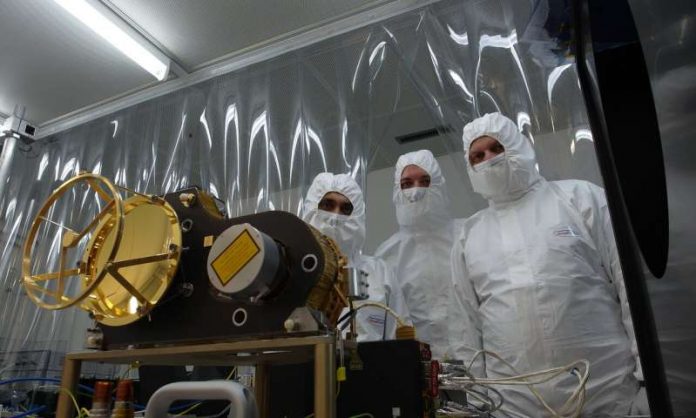On Saturday, October 20, 2018, the BepiColombo space probe set off on its journey to Mercury from the European spaceport in Kourou, French Guiana. The 6.40 meters high and 4.1 tons heavy BepiColombo space probe consists of two spacecraft: the Mercury Planetary Orbiter (MPO), which was constructed by the European Space Agency, ESA, and the Mercury Magnetospheric Orbiter (MMO), which was constructed by the Japan Aerospace Exploration Agency, JAXA. Both spacecraft will fly to Mercury together as a coupled system, but will be put onto separate orbits upon arrival. The MMO will study the magnetospheric interaction between the planet and the solar wind. The MPO will be lowered to a deeper orbit, which is ideal for the remote sensing of the planetary surface.
The European-Japanese space probe’s journey to Mercury, the smallest planet in our solar system, will take seven years. Once BepiColombo has achieved its intended orbit, data transmission to Earth will take approximately 15 minutes. Ultimately, the scientific investigations and experiments on Mercury should take one to two years. BepiColombo has instruments on board which were designed and built at the Physics Institute of the University of Bern.
The journey must be made via detours: “On its way to Mercury, BepiColombo flies past Venus twice and Mercury six times to slow down the spacecraft against the gravitational pull of the Sun so that the spacecraft can be brought into orbit around Mercury,” explains Peter Wurz, Professor at the University of Bern Physics Institute and co-head of the Department of Space Research and Planetology. On October 15, in the early hours of the morning, the space probe will fly past Venus for the first time at a distance of 11,000 km, the second flyby is planned for August 2021.
On board the BepiColombo is among others the SERENA Experiment, which consists of four instruments. “SERENA also includes the innovative mass spectrometer STROFIO, which we contributed to most,” says Peter Wurz, who is also the STROFIO project leader. “With STROFIO, we will record the very thin atmosphere of Mercury one day—we speak of an ‘exosphere’—and analyze its chemical composition.”
The Venus flyby is not only being used to decelerate but also for measurements. In addition to STROFIO, the University of Bern is also involved in two other SERENA instruments, the MIPA and PICAM. “We are expecting data from the ionized particles in Venus’ atmosphere from these two instruments, which are switched on during the Venus flyby,” explains Wurz. The Sun and the solar wind carry ionized particles from the outermost edge of Venus’ atmosphere. “The amount of particle loss and its composition can be determined using the two instruments,” Wurz continues.
Over the decades, the University of Bern has repeatedly shown that very high-quality instruments for space research can be built here,” says Peter Wurz. “The University of Bern has always been a reliable partner in these numerous international collaborations. Which is why we’re always being asked to undertake new missions to exciting destinations in the solar system.”








